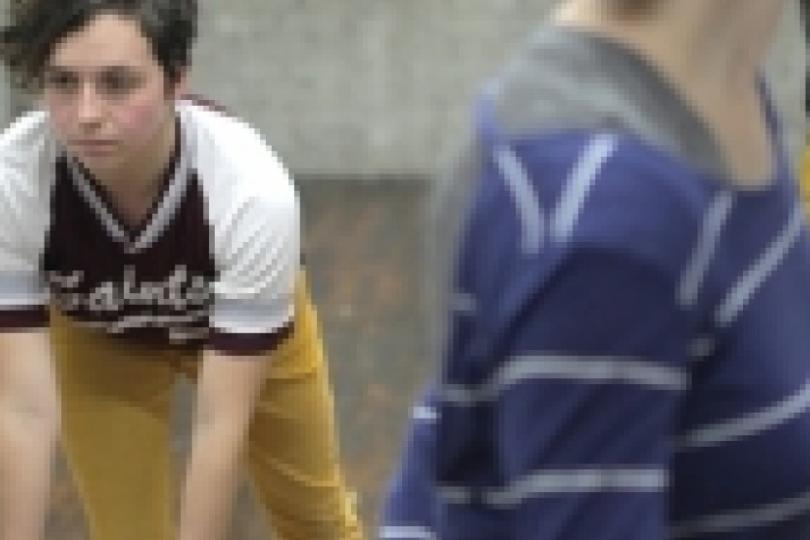Space is the thing
Editorial

There are no fewer than twenty people sitting in couches and chairs around our house at the first living room performance my husband Ben and I host in our St. Paul duplex. The night features work from choreographer Emily Gastineau, poet Brad Liening, and folk singer Kristen Graves. My corner viewing perch for the show gives me an up-close view of each performer; I’m particularly struck by Gastineau’s movement. Dance, with its obvious dependence on the visual, pops in such an intimate space. Her arms windmill around, narrowly missing the hanging light fixture in the center of the room, and I’m aware of how highlighted and deliberate each action appears just three feet away from me, from the tossing of hair to the sound of breath-- details that most likely would have been diluted in a larger space.
The night leaves me thinking a lot about space as a vital performance ingredient. Playwright Rachel Jendrzejewski writes “Everything about a space—its architecture, resources, history, energy, the other people who interact with it—nuances any performance that happens within it.” Gastineau’s piece reminds me that dance, with its emphasis on both the visual and kinesthetic senses (for audience members, too), relies on space to communicate meaning more than most types of performance. And yet, I’ve rarely sought out spaces to present my choreography based on what best suits the work; it’s usually opportunity and cost that sway me. The more I pay attention to the role of space as I watch dance, the more I’m aware that it merits lots of consideration. Six of my dance maker colleagues gave particularly smart attention to space in their work recently. Here’s a bit of what I learned from them:
SuperGroup and Rachel Jendrzejewski: Parts of a Whole
I’m at the Bryant Lake Bowl watching Laurie Van Wieren’s monthly 9x22 Choreographers Lab, and the collaboration of SuperGroup (Sam Johnson, Erin Search-Wells, and Jeffrey Wells) and Rachel Jendrzejewski are previewing a part of their upcoming piece, which will be presented as part of the Walker’s Momentum series. There are at least six performers on stage. This section of the in-process piece combines loops of sung and chanted text, and repeated gestures and spatial patterns. There is a lot going on. For starters, six bodies is a lot of bodies on a small stage (nine feet by twenty two feet), and they are active bodies. While I’m aware that the creators are working with layers, I can’t quite digest all that’s taking place; It’s as if I’m viewing a puzzle that has pieces flipped upside down and overlapping one another, and the image is indecipherable.
When I see this piece a few months later in a larger space - the Southern Theater - it all makes sense. With more distance between the playing space and the house, I’m able to take in both the individual layers of it’s [all] highly personal, and the picture that they form when combined. The loops of text and sound give a meditation-like backdrop to my continually changing viewing lens. At points I sit back in my chair and focus on momentum (no pun intended): bodies rapidly and repetitively moving across the playing space, and the patterns that they are making. At other times I use the cardboard binoculars provided by the choreographers to zoom in on a single performer’s methodical movements, forgetting the rest of the group. Through their use of space, the choreographers communicate that they are playing with parts in relationships to the whole, and that the individual details are just as important as the culmination of the details. This approach gives me permission to choose my own adventure while I watch.
Megan Mayer: The Zoom Lens
Megan Mayer recently produced a night of dance vignettes-- both reprising old work, and sharing some brand new pieces. I first saw We tried to throw the light at the Southern Theater, and loved the changes that she made to fit the piece at the Bryant Lake Bowl. What’s particularly admirable about Mayer’s approach to dance is her reverence for static images – the acknowledgement that dance benefits from the power of stillness just as much as movement. Mayer shares her approach to space:
“I think about framing the space and what it's like to view the work from the audience. At the BLB I used a large platform to extend the stage out into the room, so the audience would feel closer to the action. I often start a dance with still images (photos, film stills, memory) and then figure out ways to locomote them. I am less interested in the locomotion than holding the image, even if it's static. I wanted [one of] the dances to look almost like a hologram, as if the dancers were a projection that just landed in the audience, out of context and incongruous. I imagined the dancers would look like something from a hazy dream that disappears from the ether as you try to describe it.”
Whereas the use of space in it’s [all] highly personal encourages me to consider the relationship of parts to the whole, Mayer’s choice to bridge the gap between stage and house directs me to sink into the details. I focus on the performers’ unwavering gazes, and each tiny gestural shift, completely forgetting the unoccupied parts of the space.
April Sellers: Space Is The Thing
At Monday Live Arts at the Ritz Theater, choreographer April Sellers uses the small, in-the-round performance space as an excuse for a four-sided composition exercise. The quartet, called Domesticated Wild Things consists entirely of unison movement, giving each part of the audience the exact same experience of the piece. Sellers “didn’t want [any part of the audience] left feeling like they had missed something.” It’s a kind consideration in a sometimes confusing and attention-splitting performance set-up. Sellers has shaped the barebones Ritz studio space specifically for the piece - hanging large portraits from the ceiling, and defining the floor of the performance space with an intricate, custom-made covering. Space is a common consideration for Sellers:
“I think about space obsessively when I am making a work. It wasn’t always this way, but when I starting collaborating with [choreographer] Judith Howard and we started making dances at our house, space was the thing. But it wasn’t just the physical space – the walls, the floor, or the rake – it was the experience of the space. What was the audience’s experience from the moment they walk in the room? I think all the time about directing the eye – telling the audience where to look when, and purposefully revealing morsels.”
Space: Start With Questions
There are big questions to ask when making most kinds of performance:
How do you want your audience to feel?
What do you want them to see?
What are you emphasizing?
What are the relationships between the bodies onstage? What about between the bodies and space?
(The list goes on....)
Space is just one of the elements that can answer the questions-- a potentially big element, of course.
In March I started making Small Dances: dances choreographed with tiny living room and gallery spaces in mind. This February and March these dances will travel around the Twin Cities, and I’m looking forward to the opportunity to apply what I’ve been learning about space and dance, especially with continually-changing performance venues. Some of the potential spaces are really small. It’s actually a liberating limitation. If you have a hundred and fifty square feet, you make a dance for a hundred and fifty square feet. I picture the performances taking place after we’re all sick of snow. They’re attended by a group of cold, quiet Minnesotans gathering in a small room, needing to sit just a little too close to one another for Minnesotan comfort. At which point I will purposefully reveal morsels, of course.




